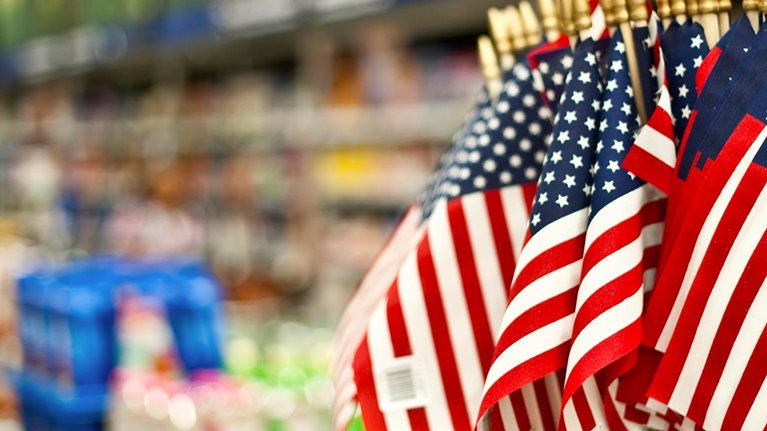Taking the pulse of consumers is a perennial challenge, and the behavior of shoppers changes quickly amid broader trends. So how are companies to keep pace in this ever-shifting landscape? Tracking consumer sentiment over time can give organizations a better understanding of how people shop, where they shop, and what differences matter across countries and demographics. In this episode of the McKinsey Podcast, McKinsey partner Alex Rodriguez and specialist Anne Martinez speak with McKinsey Publishing’s Monica Toriello about ways companies can stay in tune with trends as consumers evolve.
Podcast transcript
Monica Toriello: Hi, I’m Monica Toriello, an editor with McKinsey Publishing. Thank you for joining us on today’s podcast. Our topic for today is consumer sentiment. In other words, how consumers around the world are feeling about their financial situation, how that’s affecting their spending decisions, and what the implications are for consumer companies.
Here with me to discuss this topic are two people who have spent quite a bit of time studying consumer sentiment. They oversee the McKinsey Global Consumer Sentiment Survey, an online survey covering 25 countries. First, we have Anne Martinez, who is an expert in McKinsey’s Consumer Packaged Goods Practice. She’s based in Stamford. Thanks for being here, Anne.
Anne Martinez: Thank you for having me.
Monica Toriello: And we’re pleased to have Alex Rodriguez with us today, as well. Alex is a partner in our New Jersey office. Glad to have you with us, Alex.
Alex Rodriguez: Thanks for having me.
Stay current on your favorite topics
Monica Toriello: As we said earlier, this survey covers 25 countries. It has 25,000 respondents. Summarize for us the two or three or four takeaways from the latest survey. Specifically, how different were they from the previous year’s results, and was there anything that was surprising to you?
Anne Martinez: A couple of key insights were very interesting for us. One is if you look at the financial security that people feel over time—that is, whether you are making the same purchases you were in the past, delaying purchases, or cutting back on spending. We see that overall, on the global level, looking at all 25,000 consumers in our survey, the financial index increased. That means that in our last round of surveys, and that was September 2016, consumers overall felt financially more secure than they did the year prior.
That’s of course not the same and universal in all the 25 countries. What we saw is that there are countries, like Germany and the US, where people were more positive in September 2016 than they were a year prior. But there were also other countries, such as Colombia and various countries in the Middle East, where consumers felt less financially secure.
The other key finding—we ask consumers, well, when you make a purchase in a store and you look at your typical shopping baskets or your typical milk, cheese, pasta, you name it, and you look at the brands that you buy, is there a difference over time? What we saw is that overall fewer consumers, last time around, traded down. So there were fewer consumers who picked a less expensive brand last year than the year before.
There are very strong differences, too. Because if you ask consumers in Brazil or in South Africa, there were many more consumers who traded down. The flip side of that is those who are trading up. And there are more consumers, on the global level, who picked a more expensive brand. Again, there are differences between categories and very sharp differences between countries. So if you look at the countries where there was a lot of trading up, it’s countries like Germany and India.
Want to subscribe to The McKinsey Podcast?
Alex Rodriguez: I would say, from a channel perspective, overall we’re seeing a continued trend toward the online, discount and the club channel. One of the biggest insights from the survey is that if you look at China and India, that movement toward online is impressive. And we’re seeing that consistently, at least over the past couple of years, and we expect that trend to continue going forward.
Monica Toriello: Let’s talk about the online channel a little bit. In the UK and France, for example, online grocery has a much higher penetration than it does here in the United States. Do you think that will change? Or do you think that there are specific factors in those countries that are not true here in the US, and therefore it won’t ever catch up?
Alex Rodriguez: We do believe the US will eventually catch up. But there are some structural differences between Europe and the US. You’re seeing online players working in grocery—working very well in big, urban areas where the economics simply work for delivery. Given the distances of significant portions of the population of the US to actually get to their homes, that is, to date, still a structural barrier.
Anne Martinez: The other difference is that in Europe, what you see in France and in the UK, where they’re so extremely powerful, is “click and collect.” So you make an online purchase and you go to the store to collect it. In the US, that is starting to kick off, but it’s not as strong, whereas, especially in France, it’s really large.
Would you like to learn more about our Consumer Packaged Goods Practice?
Monica Toriello: What about demographically? Are you seeing any differences between, say, men and women in consumer sentiment or millennials and boomers?
Anne Martinez: Yes, definitely. We’ve looked at the US market for many, many years. And what you see there is that females are much more likely to be frugal. Thirty-eight percent of women are paying more attention to prices versus 27 percent of men. Or 32 percent of female consumers in the US wait for sales before making a purchase versus only 20 percent of men. And if you look at the US millennials and boomers, millennials are the ones who are really not as brand loyal. They’re much more likely to trade up or down, whereas if you look at boomers they’re much more resistant to change. To take a couple of statistics, 18 percent of boomers are delaying their purchases in the US versus 39 percent of millennial [moms].
Monica Toriello: You’ve talked about trading up to more expensive brands but also trading down to cheaper options. And about 40 percent of consumers trade down to private-label products. Do you think there are categories that lend themselves better to private label? And do you think there are categories in which private label will just never be a big factor?
Anne Martinez: I think the categories that are less innovative and more commoditized and less personal, so less for me—those are the categories that really lend themselves to buying a private-label product. Globally, more than 50 percent of consumers trade down to private-label pasta; it’s the same thing for prepared bakery products. But if you flip that and you look at personal care and alcoholic beverages, I feel that’s much more “for me.” There it’s only 20 to 25 percent of consumers globally who trade down but then buy a private-label product. The other consumers are trading down and simply buy a less expensive but still branded product.
Alex Rodriguez: What I like about this is that this is not isolated to certain markets. This is actually a trend we see globally around what’s “for me” versus what you might argue is more commoditized.
Monica Toriello: I guess most people see alcoholic beverages and wine as “for me” because that seems to be a category where they’re trading up a lot. But are there other cultural things that affect the decision to trade up versus trade down?
Anne Martinez: Yes, very much so. Look at consumers in China, for example. McKinsey has done various [kinds of] research in China, different from our sentiment-survey research. And you see in China that consumers would much rather buy a global branded product and trade up. Whereas if you look at consumers in Brazil, there’s much more of a tendency to stretch the currency that you have and buy more, so you buy a national brand or local brand and just buy more rather than buy a more expensive global brand.
Alex Rodriguez: Across Latin America you see different behaviors. I would argue that the behavior Anne just described in Brazil is not something you would observe in many categories, say, in Mexico. And I would also make a distinction between categories like apparel and food. Stretching your peso in Mexico, when it comes to food, is more prevalent. When it comes to things like apparel, you see a lot more willingness to overspend when you compare similar classes with other markets.
Monica Toriello: Almost everywhere, it seems, consumers are continuing to look for value. They’re looking for ways to save money, and in one of the articles that you’ve written in light of this scrimping and saving, one of your recommendations is for companies to clearly articulate the role of each brand in each channel. What does that mean, and can you give an example of a company that does that well?
Alex Rodriguez: An example could be Procter & Gamble and its basic line of paper products. Bounty Basic and Charmin Basic are available in low-cost channels, while full-price Bounty and Charmin are brands that are available elsewhere. Some companies are being smart about how they make distinctions across channels to cater to these consumer trends.
Monica Toriello: Alex, you’ve talked about the importance of the longitudinal data and for companies to keep their finger on the pulse of the consumer. What are some companies doing to actually achieve this? What are some ways that they are keeping abreast of consumer sentiment, aside from looking at survey results and indexes?
Alex Rodriguez: We see many companies conducting consumer surveys such as this one. Again, I think many of those companies have found the survey we’ve been conducting very helpful to either complement what they are doing or actually serve as a starting base for what they then conduct.

The new consumer
A lot of companies are doing social-media analytics, which is increasingly an extremely important source of information on consumer sentiment and, ultimately, on behavior. You can get into the more nitty-gritty of how consumers behave. You can look at things like transaction logs. You can look at loyalty-card data. You can look at cell-phone movement data. You can look at Web behavior and clicks and understand where things are trending and identify changes to all of those.
Monica Toriello: Do you have any perspectives on which of those work best, or do you think that they have to do sort of a combination of those kinds of things?
Alex Rodriguez: I think the highest-performing companies never rely on a single source—or even three sources, for that matter—but rather keep a pulse on multiple sources to understand what consumers are doing. You have to be watching trends across multiple sources of information to actually be able to recognize trends and take advantage of them. So this is something that successful companies don’t do as a one-off. This is something that successful companies are doing on an ongoing basis across, as I said, multiple sources of information.
Anne Martinez: McKinsey has done a couple of studies. What we’ve seen is that it’s typically the middle- and smaller-size companies who’ve proven to be better in tune with these changing consumers.
Monica Toriello: And why is it, do you think, that small and medium-size companies would be better at it?
Alex Rodriguez: In general, you know, smaller companies are more nimble. They are more interconnected, so as you work across multiple sources of information and with very rapidly changing trends, you need to have good cross-communication within the company, which obviously is easier in smaller companies. Beyond that, moving quickly based on the insights is also something that smaller companies are able to do. Larger companies have many more vetting processes and take longer to make bigger decisions.
Monica Toriello: How do consumer sentiment and the things that you find out in this survey affect how a company thinks about customer experience, if at all?
Alex Rodriguez: What I see companies doing is trying to learn from consumer-sentiment trends to understand where consumers are heading, what their interests will be in the future, and how they’ll want to purchase—to actually try and stay as relevant as possible in the future. Increasingly, what we’re seeing is that part of remaining relevant is actually creating an experience that consumers want. So consumer sentiment is an input into what type of customer experience you need to be providing to remain relevant for the consumer and the different markets.
Monica Toriello: And what does that mean in practice?
Alex Rodriguez: It’s a combination of more tactical things and bigger-picture things. On the tactical things, it may be what SKUs you choose to carry, how you are communicating value, or how you are demonstrating the premium nature of some of the categories you have. At a macro level, recognizing a trend in consumer sentiment that has an impact on the overall relevance you have as a channel, for example, I think leads to bigger questions around, say, how much should be brick and mortar versus online.
Monica Toriello: What do you think is the shelf life of consumer sentiment? Is sentiment going to change six months from now, a year from now? Or does it change tomorrow?
Anne Martinez: It depends on the country. There are clearly countries where [measuring] once a year now has proven to be enough. As Alex said, we started in the US a decade ago. In the beginning, we did the survey every half year because at the beginning of the recession, 2008–09, sentiment was changing really rapidly. Now it’s much more steady. In other countries, like for some in the Middle East, sentiment is changing much more rapidly. And we’ve decided to do the survey twice a year.
Alex Rodriguez: In many markets, taking the pulse check once a year is more than enough. Certainly, we feel that holds for the US. We are testing twice a year in certain markets, and we will likely continue to do that in a subset of markets where the socioeconomic situation changes at a more rapid pace.
Monica Toriello: Thanks very much, Anne and Alex, for your time today, and thanks to all of you for listening. To read more about the changing consumer landscape, please see our series of articles about the new consumer, on McKinsey.com.


